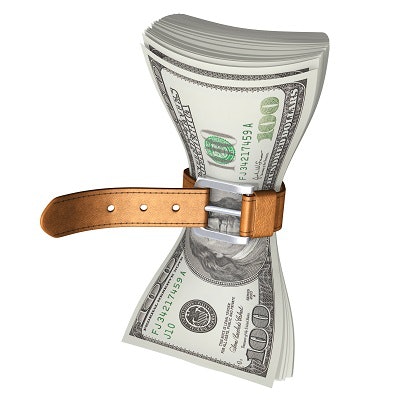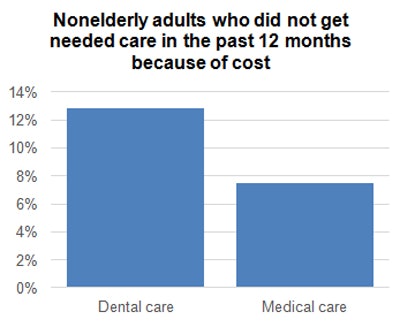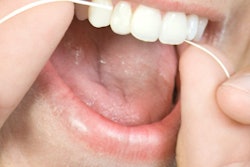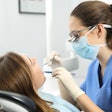
Many U.S. adults, including those with private insurance, are struggling to afford dental care, a new study found. In addition, coverage gaps between U.S. adults in the highest and lowest income brackets are widening.
 Marko Vujicic, PhD, chief economist and vice president of the ADA Health Policy Institute. Image courtesy of the ADA.
Marko Vujicic, PhD, chief economist and vice president of the ADA Health Policy Institute. Image courtesy of the ADA.The findings are somewhat surprising as other recent studies have shown that more U.S. children are visiting the dentist and that coverage gaps between kids from high- and low-income families are narrowing. The study authors, led by Marko Vujicic, PhD, suggested that the Patient Protection and Affordable Care Act (ACA) and other recent healthcare policies may be contributing to the trend. Vujicic is the chief economist and vice president of the ADA Health Policy Institute.
"The differential policy treatment of dental care for adults and children, both before and after implementation of the ACA, has important implications for oral health," Vujicic and colleagues wrote (Health Affairs, December 2016, Vol. 35:12, pp. 2176-2182). "It is important to understand the implications of the different policy approaches to dental and medical coverage in the U.S. healthcare system."
No. 1 barrier to care
While dental coverage is an essential health benefit under the ACA for children, it is not for adults. As such, many states' ACA exchanges and Medicaid programs do not offer plans that include adult dental benefits. Vujicic and colleagues wondered how the difference in healthcare policy between adults and children, as well as between dentistry and other medical specialties, translated to individuals from all incomes and insurance types who need care.
The researchers primarily used data from the 2014 National Health Interview Survey (NHIS), with supplementary data from the ADA Health Policy Institute's Oral Health and Well-Being Survey. The NHIS is an annual survey in which U.S. Census Bureau employees conduct household interviews with a nationally representative sample of children and adults.
Vujicic and colleagues ended up with a sample of about 50,000 children and adults. They divided the sample into various categories and subcategories based on participants' age and insurance type:
- Children ages 2 to 18
- Nonelderly adults ages 19 to 64
- With private health insurance and private dental insurance
- With private health insurance but not private dental insurance
- With Medicaid benefits
- With no health insurance and no dental insurance
- Seniors age 65 and older
Nonelderly adults from all subcategories, including those with both private medical and dental insurance, reported cost to be the No. 1 barrier to dental care. Cost was also a barrier to care significantly more often for dentistry than for all other studied healthcare types, including medical care, mental healthcare, and prescription drugs.

"We found that irrespective of age, income level, and type of insurance, more people reported financial barriers to receiving dental care, compared to any other type of healthcare," the authors wrote.

Vujicic and colleagues also found sharp income disparities for access to dental care. More than 95% of respondents in the highest income category reported being able to get needed care, while only about 75% of respondents below the federal poverty level were able to get needed care.
Why is dental care so expensive?
When it comes to out-of-pocket spending, dental care also dwarfs other types of care. The authors noted that in 2014, Americans paid for 40% of dental care out of pocket, compared with only 11% of expenses for other types of healthcare.
The persistent gap in financial barriers between dental care and medical care can be partially attributed to the ACA, according to the study authors. They wrote that the ACA's design continued the ideological separation of dentistry from other medical specialties.
"Before health insurance expansion under the ACA, adults were roughly twice as likely to have lacked dental insurance than medical insurance, and the design of the ACA reinforced the coverage gap," they wrote.
However, they also noted private insurance plans are placing more of a financial burden on consumers. They cited a 2016 ADA Health Policy Institute report that found consumers with private insurance are paying more in premiums and co-payments than the benefits are worth. (Although insurance companies countered that the report used inflated data and flawed methodology.)
Coverage expansion
Vujicic and colleagues pointed out that their study had several shortcomings. Most important, study participants determined for themselves what constituted needed dental care, which may not be aligned with what a professional would think is needed. For instance, one person may only determine care is needed if he or she is in severe pain, while another person may believe a cosmetic treatment is needed.
In addition, the authors included a reminder that correlation is not causation, and, therefore, although there is a correlation between financial burdens, family income, and dental care, it does not necessarily mean one leads to the other.
Vujicic and colleagues concluded the paper by outlining some steps policymakers may want to consider when trying to reduce dental care costs, including expanding dental insurance coverage and redesigning coverage so that it includes more consumer protections. They also re-emphasized the importance of dental care and the need for it to be included with other medical specialties.
"Dental care for adults is not considered an essential health benefit. This is in contrast to dental care for children, which is compulsory in Medicaid and the Children's Health Insurance Program and is part of the individual mandate under the ACA," they wrote. "Policymakers ought to consider reforms at the federal and state level to ease financial barriers to dental care and better integrate dental and health coverage."



















